What 800+ marketers have to say about current trends and future projections
Each year, PX conducts its comprehensive State of the Industry survey to capture the pulse of the performance marketing industry. We gathered insights from over 800 participants spanning brands, publishers, agencies, and tech platforms, among others, to spotlight the pivotal trends of 2024 and forecast the trajectory of the performance marketing industry. Like every year, this rich data was showcased during our keynote session at LeadsCon 2024, featuring a panel of distinguished experts who sparked engaging discussions on forward-looking predictions and strategies essential for navigating future challenges and seizing upcoming opportunities.
This past year has been transformative, marked by new regulatory frameworks and a significant pivot towards technology and automation at the core of performance marketing processes. Reflecting this shift, many of our clients have innovatively overhauled their sales funnels, integrating e-commerce elements to meet customers across a variety of channels—ensuring flexibility and accessibility at the final purchase stage. This strategy not only aligns with the current technological advancements but also caters to evolving consumer preferences, underlining the dynamic nature of our industry.
In a rush? Here is a quick summary
- 65% of respondents are optimistic about the future of the industry
- 63% of respondents welcome the FCC rulings on explicit consent; 21% are neutral
- Buyers using dynamic pricing are 32% more effective in finding the right customers
- Sourcing higher intent and compliant prospects is the #1 automation focus area for buyers
- 72% of respondents are excited and optimistic about AI in performance marketing
- 75% of buyers state that they have clear knowledge of which sources are successfully generating leads for them
- 70% of buyers agree that they have the control they need over their marketing campaigns
- Working with 30+ sources makes it 90% more likely for a buyer to hit their ROI goals
- 53% of publishers think they are getting the best possible price for their leads
- Sellers state that 20-30% of their leads or calls get dropped
Deep Dive into Survey Findings
Participation and Profile
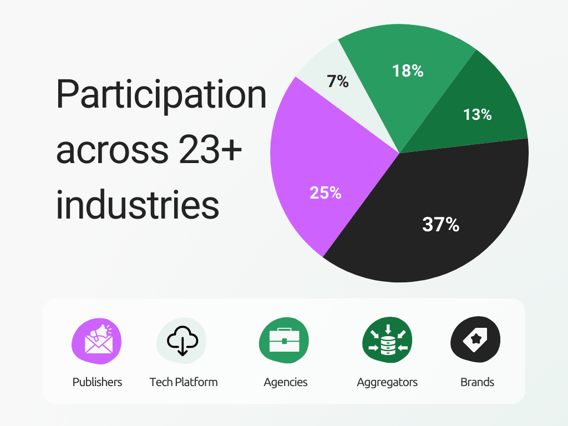
These 800+ respondents span 23+ different industries, including Medicare, Home Services, Insurance, etc. This provided us with a healthy mix of insights spanning across industries and profiles.
A Surge of Optimism: 65% of respondents mention being optimistic about the current state of the industry
The industry's sentiment has seen a notable shift toward optimism, with 65% of respondents expressing a positive outlook about the current state of performance marketing—up from 48% in 2023. This buoyancy is impressive given the backdrop of global economic flux, demonstrating the industry's resilience and adaptability. Maybe this 65% does not strike you to be too overwhelming of a number, but the low percentage of pessimists (only 7%) suggests a generally positive view is prevalent.
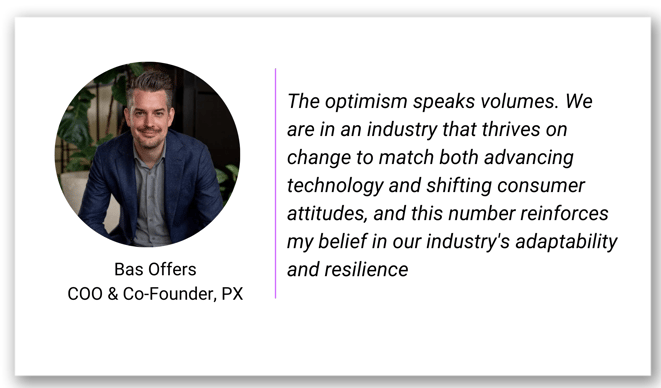
Compliance and Regulation at the Forefront
About 60% of the respondents now view investments in compliance, verification, and fraud prevention as pivotal to their operational success.
With new regulations like the FCC’s updated consent requirements, compliance has become a top priority for buyers and publishers. Addressing the elephant in the room, nearly two-thirds of respondents view the rulings favorably, signaling a commitment to trust and transparency with their future customers. The FCC's recent rulings have stirred mixed reactions, but the dominant response has been welcoming.
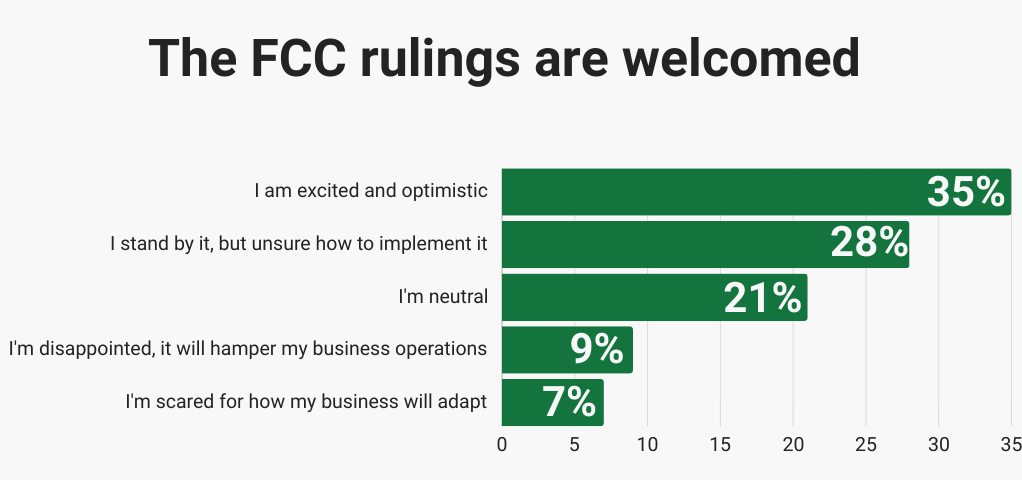
One interesting stat here is that 28% of respondents are still unsure how to implement the FCC updates (this survey was conducted 3 months after the rulings). We recently conducted a series of webinars with Verisk Marketing Solutions to demystify these rulings and provide better clarity on how to navigate them. Watch the webinar recordings here>>
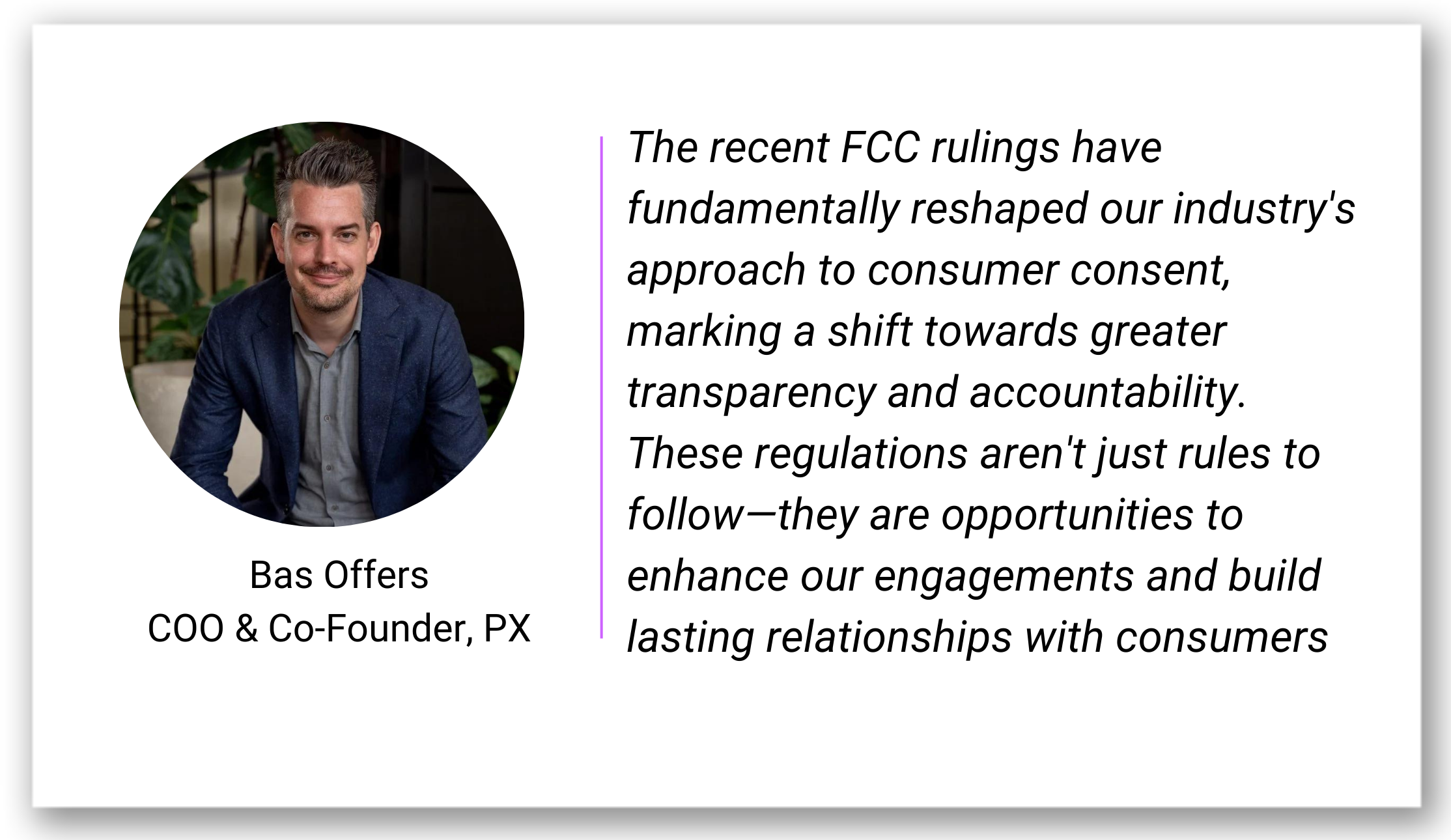
At the same time, sourcing higher-quality, compliant leads was named as the one focus area of automation over the next year by marketers.
The role of technology and automation
Performance marketing has seen massive shifts towards automation and artificial intelligence over the past year. The survey highlighted a significant gap between the current state of automation and where companies desire to be, with a noted 29% increase in automation implementation being the target. Furthermore, the embrace of AI and related technologies is strong, with 72% of participants optimistic about these tools enhancing performance marketing outcomes, although 44% cautioned about potential pitfalls if not implemented thoughtfully.


Campaign dynamics between brands and publishers
The dynamics between brands and publishers are evolving. Marketers have seen consistent ROI improvements over the years and express a clear understanding of their sellers, which has significantly increased since 2019.
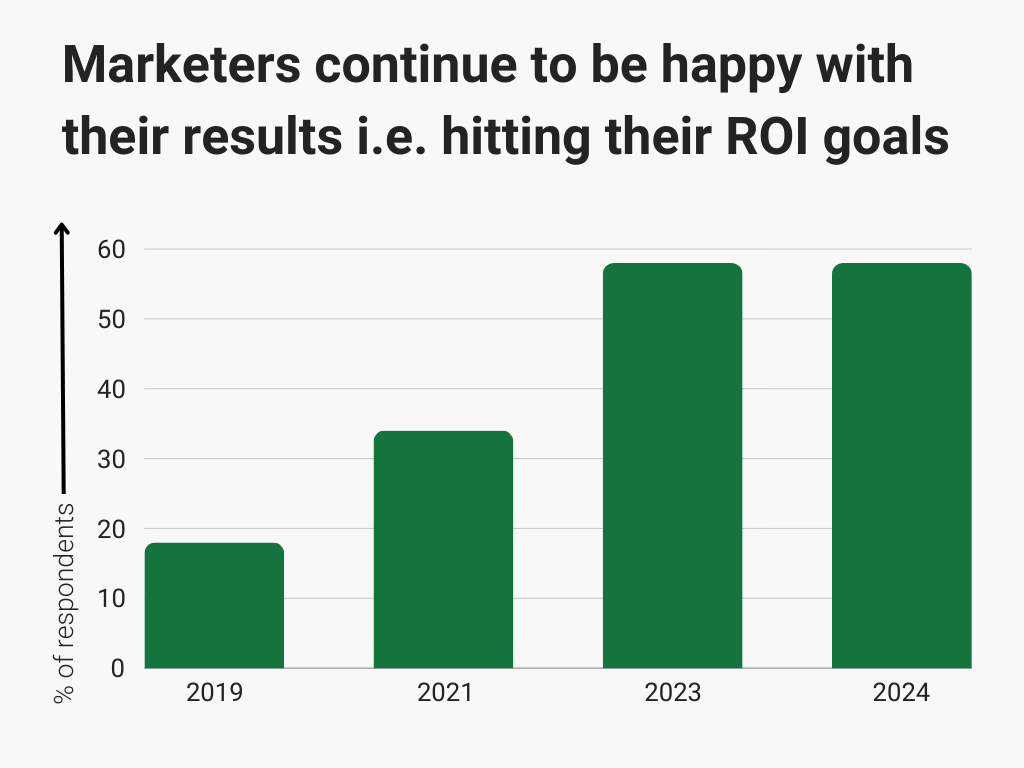
Brands are increasingly focusing on managing multiple third-party sources, with data showing that those handling over 31 sources are 90% more likely to hit their ROI. There could be multiple factors contributing to this: increasing the number of sources helps mitigate source volatility; marketers don't need to depend on few sources for all their prospects. Having more sources also provides an opportunity to test and optimize their sources and sub-sources and scale what works. Moreover, 27% of budgets are now earmarked for exploring new lead sources, indicating a proactive approach to diversifying strategies. On the publisher side, there is a better alignment of expectations regarding pricing, with 53% believing they are receiving fair prices for their leads—an improvement from the previous year.

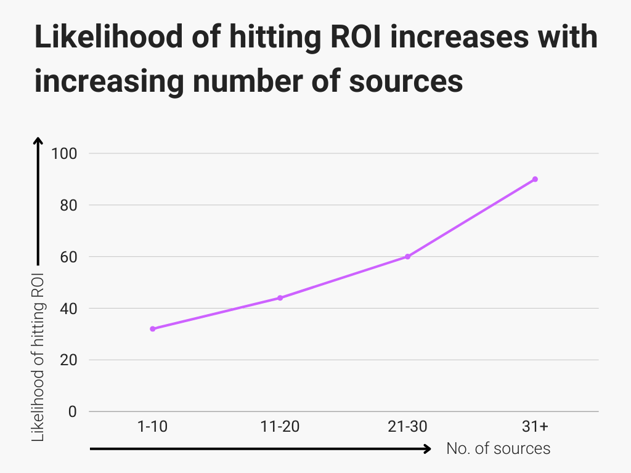
Operational Challenges and Inefficiencies
22% of the marketing budget remains unused by an average marketer, which may indicate potential inefficiencies in campaign optimization or overestimations in budget planning. Simultaneously, the top operational challenges for buyers include keeping their agents active, i.e., on the phone constantly minimizing agent idle time, and optimizing call center metrics, which are crucial for enhancing customer experience. We curated some strategies that have been working for our clients and help them make the most out of their agents and call centers. Read here>>
Publishers, on the other hand, mention 20-30% of their calls and leads getting dropped, which means this 20 - 30 % of prospects never end up being connected to a brand, leading to a big, missed potential in the industry.
 This is the first year we have seen retention also become a focus for marketers. Historically, only 1 of 16 businesses have prioritized retention. One way PX helps in increasing retention is by following consumers' in-market activity on our marketplace and routing the consumers' shopping around to the retention team. Read more>
This is the first year we have seen retention also become a focus for marketers. Historically, only 1 of 16 businesses have prioritized retention. One way PX helps in increasing retention is by following consumers' in-market activity on our marketplace and routing the consumers' shopping around to the retention team. Read more>
Dynamic Pricing
Dynamic pricing continues to drive success, with a significant portion of brands reporting effectiveness in finding the right customers through this strategy. Buyers using dynamic pricing are 32% more effective in finding the right customers because of higher-converting leads. Surprisingly, only 26% of marketers claim to operate their campaigns on dynamic pricing models this year, and 63% still operate on fixed pricing models.
Dynamic pricing is when a lead is priced based on considerations like real-time supply and demand, quality, and campaign-specific metrics, ensuring that marketers pay a fair price for the value of each lead and not a bundled price. Read more in this blog about how dynamic pricing is a game-changer for your marketing campaigns.
Focus on greater control and visibility of their campaigns
The majority of marketers feel they are in control of their campaigns (70%) and have a clear view of which sources are generating customers for them (75%). Control over campaigns has gone up significantly compared to past years, which could stem from multiple factors. We believe the FCC rulings were a big one, which pushed marketers to be more engaged with their campaigns and opt for channels designed to provide more control.
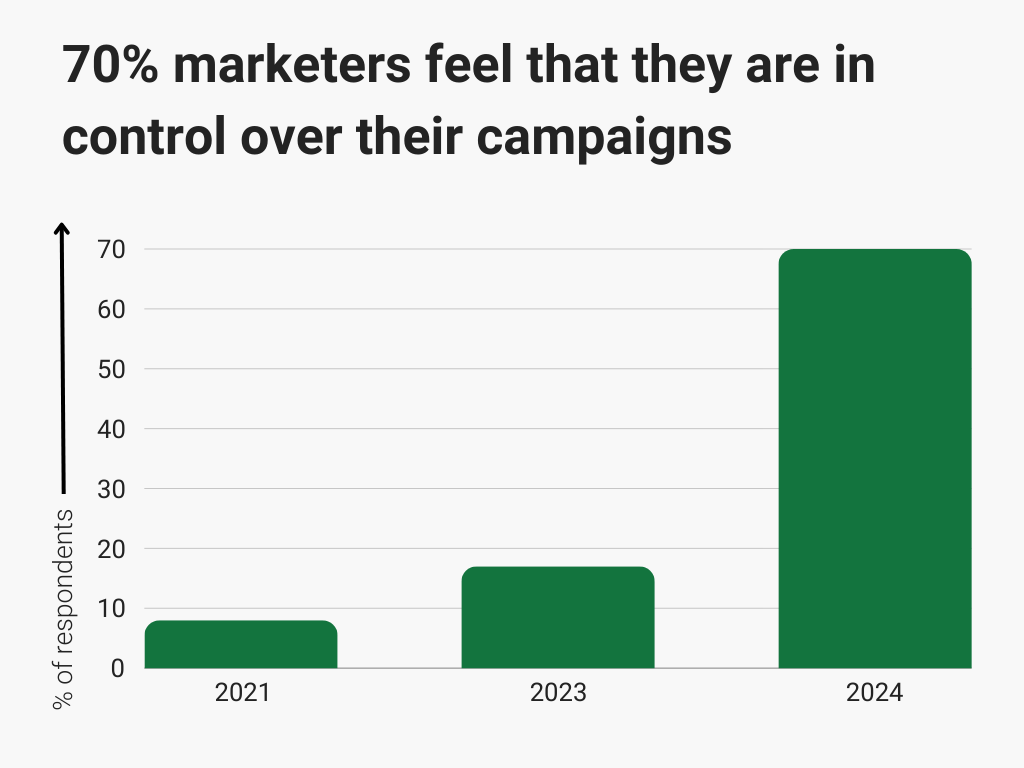
Feedback loop through Disposition Data
Of the publishers surveyed, 58% state that they receive and utilize disposition data. 42% report that they still do not receive disposition data on a regular basis. As a buyer, providing disposition data allows you to attribute and measure the performance of your leads on a (sub-)source basis. It enables publishers to become more agile by identifying which channels, traffic types, and sub-sources outperform others.
At PX, we use the disposition data in a dynamic pricing model, enabling brands to set pricing rules based on traffic types, attributes, and sub-sources. This transparency not only enhances the brand's control over their campaigns but also fosters better collaboration between the two parties.
Conclusion
The trends highlighted in PX’s 2024 State of the Industry point to a period of rapid growth in performance marketing. Regulations, new technologies, and preferences are evolving at breakneck speed, requiring performance marketers to adapt quickly and stay ahead of new trends. As the landscape continues to evolve, the insights gathered here will undoubtedly serve as a roadmap for professionals looking to navigate the complexities of this dynamic field. The future looks bright.